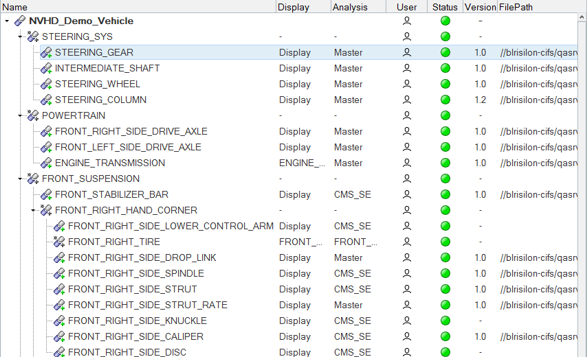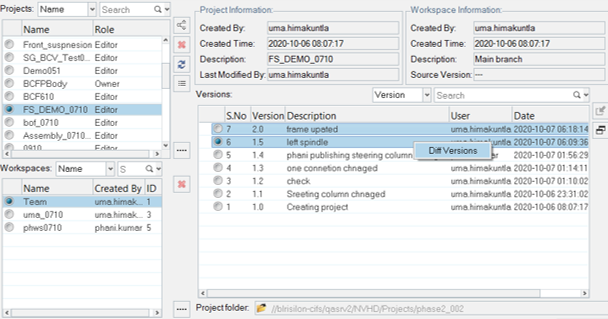NVH Preferences
Use NVH Preferences to keep all of the default configuration options and store user preferences.
NVH Preferences can also be used for all user messages in case you want to switch on the .log file creation and provide the path where it will be saved.
Click to open the NVH Preferences dialog.
Messaging
Preference setting for all user messages in case you want to switch on the .log file creation and provide the path where it will be saved.
Module ID
Preferences to specify Subrange for Tag Points, Spoints and Plotels.
Connection ID
Preferences to force IDs the numbering pattern for connectors, so that the connection elements created after realization of the connectors fall in the defined numbering pattern. The numbering pattern currently followed is as per a typical customer case. These values may be entered in the NVH Preferences dialog in the Connection ID tab.
- To check the tagpoint coincidence during Connection Realization. This creates the necessary elements on realization of connections based on the tagpoint coincidence check.
- To apply translational only DOFs for connection realization. This creates the elements with properties only in translational direction for all connections.
- To request for connection element force output.
- Apply connection force ID.
- Max force Id size
- Maximum number of digits possible to be entered by you in the Force ID entry of the States tab in the Connection Browser.
- Size
- Number of digits of the connection ID after realization.
- Prefix
- Digit to be added as prefix to connection element ID.
ID's can be forced on to a connection entity using the Create Connection - Interactive tool. If the Lock Id checkbox is activated the ID is to be locked for elems, props and mats. If you enter any value in the entry next to it, the IDs get forced to that value.
In the Connection Mapping tool for connection mapping, there will be extra columns for the Lock ID flag and starting ID value, which will be read from the .csv file and to be mapped to the FE.
ID's can also be forced using the Connector Browser, where additional columns will be added to depict the Lock ID flag and the value.
TagPoints
- Tolerance for node ID match during rendering
- The tolerance used for rendering the tagpoints. If the distance between tagpoints in the XML database and the FE database is more than the mentioned tolerance in the preference, tagpoints are not rendered and a message will appear.
- Global locked tagpoint Id range
- The range for locking the tagpoints outside of the module ID range.
TPL Folders
- Frequency Response
- Normal Modes
- LP
- Full Deck
- Connection
Standard Loadcases
The Standard Loadcases tab provides options to specify custom folders for defining the catalog for standard loadcases.
Versioning
Versioning in Altair NVH Director allows for versioning of NVH project assemblies at the team level and individual analyst level. The versions can be major and minor, depending on your choice, with access control for users as Owners, Viewers and Editors.


To enable versioning, click .
Once the Versioning Mode is turned ON from NVH preferences, the Assembly Browser is populated with additional options specific for versioning.
Additional columns for User, Status and Version are available. New options for Database Sever login and Workspaces are also populated. The context menu provides versioning specific options, including VM Version, VM FileHistory, VM FileShare and VM FileSwitch.